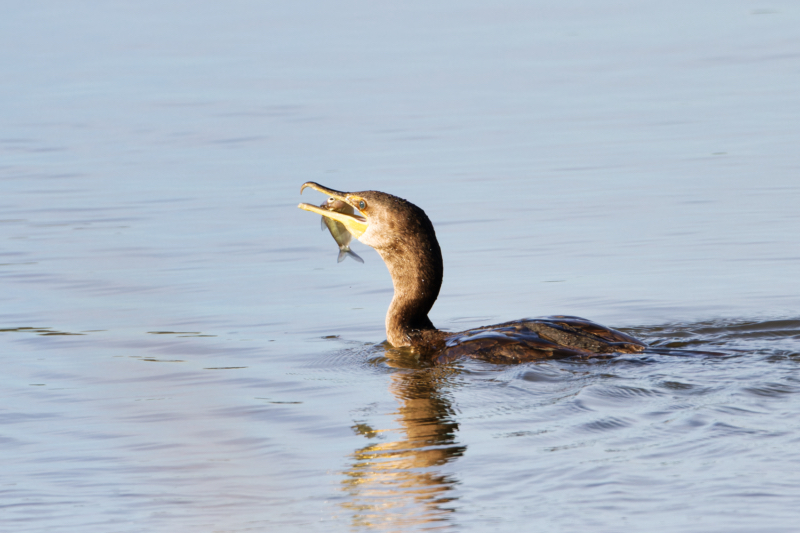Back on November 2, 2012, I had the pleasure of witnessing and photographing a Double-crested Cormorant catching its breakfast at the Sequoyah National Wildlife Refuge in Oklahoma. I was driving along the auto tour road that borders the river, when I spotted a cormorant swimming in the water. I pulled over and set up my camera on a bean bag draped over the truck’s open window, and waited.

Double-Crested Cormorant Emerges with Shad
After a few minutes, the cormorant dove into the river after its prey. Less than a minute later, it surfaced with a large shad grasped firmly in its beak. I was fortunate to capture the moment immediately after it came up from its successful dive.
Understanding Cormorant Behavior
Cormorants are common waterbirds found throughout much of North America. They are superb hunters, capable of diving deep underwater and swimming fast enough to catch quick fish like shad. Their unique anatomy allows them to plunge 30 feet down and stay submerged for nearly a minute while pursuing prey.
The Joy of Capturing Wildlife Moments
Watching this Double-crested Cormorant expertly catch its dinner was an incredible wildlife moment. Photographing the split second after it emerged from the water, triumphant with its catch, made it even more rewarding. Moments like these are why I love wildlife photography. There is nothing quite like witnessing nature in action.
Reflections on Wildlife Photography
This encounter with the Double-crested Cormorant on that November day was a vivid reminder of why I am so passionate about wildlife photography. The natural world is full of stories waiting to be told, and it is our privilege and responsibility as photographers to capture these stories and share them with the world. Nature’s wonders are abundant, and it’s our duty to ensure they’re preserved and celebrated for generations to come.
Looking Ahead
As I continue to explore the landscapes of Arkansas and Oklahoma, I look forward to sharing more of my adventures and the incredible wildlife and ecosystems that make these states so special. Thank you for joining me on this journey.
